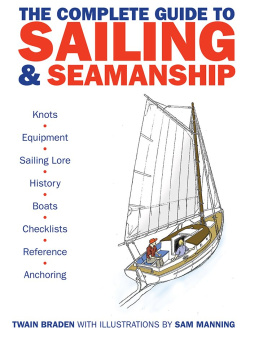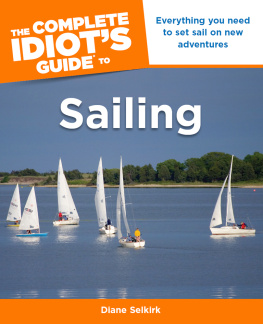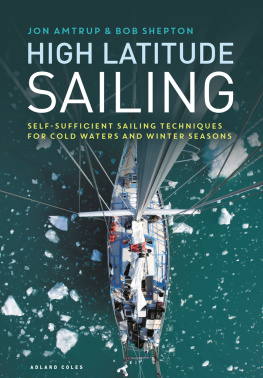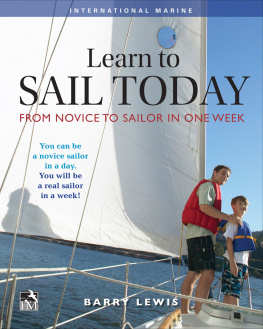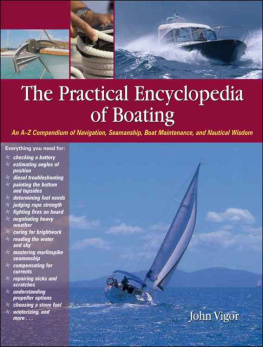Douglas Frazar - Practical Boat-Sailing
Here you can read online Douglas Frazar - Practical Boat-Sailing full text of the book (entire story) in english for free. Download pdf and epub, get meaning, cover and reviews about this ebook. year: 2020, publisher: BoD – Books on Demand, genre: Home and family. Description of the work, (preface) as well as reviews are available. Best literature library LitArk.com created for fans of good reading and offers a wide selection of genres:
Romance novel
Science fiction
Adventure
Detective
Science
History
Home and family
Prose
Art
Politics
Computer
Non-fiction
Religion
Business
Children
Humor
Choose a favorite category and find really read worthwhile books. Enjoy immersion in the world of imagination, feel the emotions of the characters or learn something new for yourself, make an fascinating discovery.

- Book:Practical Boat-Sailing
- Author:
- Publisher:BoD – Books on Demand
- Genre:
- Year:2020
- Rating:5 / 5
- Favourites:Add to favourites
- Your mark:
- 100
- 1
- 2
- 3
- 4
- 5
Practical Boat-Sailing: summary, description and annotation
We offer to read an annotation, description, summary or preface (depends on what the author of the book "Practical Boat-Sailing" wrote himself). If you haven't found the necessary information about the book — write in the comments, we will try to find it.
Practical Boat-Sailing — read online for free the complete book (whole text) full work
Below is the text of the book, divided by pages. System saving the place of the last page read, allows you to conveniently read the book "Practical Boat-Sailing" online for free, without having to search again every time where you left off. Put a bookmark, and you can go to the page where you finished reading at any time.
Font size:
Interval:
Bookmark:

BOAT-SAILING:
ON
THE MANAGEMENT OF SMALL BOATS AND YACHTS UNDER
ALL CONDITIONS, WITH EXPLANATORY CHAPTERS ON
ORDINARY SEA-MANUVRES, AND THE USE OF
SAILS, HELM, AND ANCHOR, AND ADVICE
AS TO WHAT IS PROPER TO BE DONE
IN DIFFERENT EMERGENCIES;
SUPPLEMENTED BY A SHORT
VOCABULARY OF NAUTICAL TERMS.
DOUGLAS FRAZAR,
FORMERLY FOURTH OFFICER OF THE STEAMSHIP "ATLANTIC,"
MASTER OF THE BARK "MARYLAND," AND COMMANDER
OF THE YACHT "FENIMORE COOPER" IN THE
NORTHERN SEAS OF CHINA AND JAPAN.
LEE AND SHEPARD, PUBLISHERS.
NEW YORK:
CHARLES T. DILLINGHAM.
By LEE AND SHEPARD.
Went to sea in a bowl:
If their wits had been stronger,
My song had been longer."
| CHAPTER I. |
| The Model, Rig, and Names of the Sails and Ropes in Common Use |
| CHAPTER II. |
| Ballast.Useful Knots.To anchor in a Gale of Wind.Getting the Anchor, and Casting.Anchoring for Fishing.Grounding and Floating.Warping by Means of an Anchor.To make a Running Moor |
| CHAPTER III. |
| The Helm and Rudder.Sheets.The Topping-Lift.Springing a Leak and the Use of the Pump. Sailing "close-hauled," "by the wind," or "full and by."To know when a Yacht is as near the Wind as she will lie. Running free.Before the Wind, or Scudding.To execute a Pilot's Luff |
| CHAPTER IV. |
| Tacking.Beating to Windward.A Long and a Short Leg.How to put a Yacht about.How to distinguish the Starboard Tack from the Port Tack.Jibing, or Wearing.Dropping the Peak.To beat to Windward in a Tide-Way.To take in a Jib, and furl it.To take in a Mainsail, and furl it.To reef a Jib, or take off a Bonnet.To clap one Reef in a Mainsail.To cast out a Reef |
| CHAPTER V. |
| Signal-Lights.The United States Regulations for Steering and Sailing, and the Rules of the Road.Fog-Signals.Salutes. Dipping Colors.Coming alongside.Quarterdeck Etiquette.Useful Articles of Cabin Furniture.Anchor Watch.Method and System versus Disorder |
| CHAPTER VI. |
| Cross-Bearings.Two Examples.Table of Proportional Distances.Table for Determining the Distance that an Object at Sea can be seen in Statute Miles.Determining Distance by the Flash of a Gun.To find the Difference between the True and Apparent Direction of the Wind.To find the Distance of an Object on Shore from the Yacht, by two Bearings of the Compass.Use of the Charts.Soundings.Lead-Line.Eight Bells, and Watch and Watch.Boxing the Compass.Velocity of the Wind.The Log Reel and Half-minute Glass.BuoysMan Overboard |
| CHAPTER VII. |
| Practical Hints on Boat-Sailing |
| CHAPTER VIII. |
| A Short Cruise with a Sloop-Yacht, illustrating the Common Sea-Manuvres |
| CHAPTER IX. |
| Vocabulary of Sea-Terms commonly in Use |
Font size:
Interval:
Bookmark:
Similar books «Practical Boat-Sailing»
Look at similar books to Practical Boat-Sailing. We have selected literature similar in name and meaning in the hope of providing readers with more options to find new, interesting, not yet read works.
Discussion, reviews of the book Practical Boat-Sailing and just readers' own opinions. Leave your comments, write what you think about the work, its meaning or the main characters. Specify what exactly you liked and what you didn't like, and why you think so.

